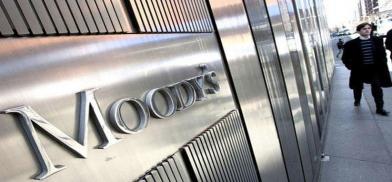Moody’s sees Pakistan growth rates sliding to 2pc
Moody’s Investors Service on Thursday estimated Pakistan’s growth rate could further slide to two per cent during the current fiscal year owing to Covid-19 outbreak and believed recent steps by the State Bank of Pakistan (SBP) would soften the impact of the pandemic on the country’s banks

Moody’s Investors Service on Thursday estimated Pakistan’s growth rate could further slide to two per cent during the current fiscal year owing to Covid-19 outbreak and believed recent steps by the State Bank of Pakistan (SBP) would soften the impact of the pandemic on the country’s banks.
On March 17, the Moody’s had formally reduced its forecast for Pakistan GDP growth rate to 2.5pc from its earlier estimate of 2.9pc in December citing mostly external growth factors in the region.
On Thursday, however, the New York-based agency hinted at even lower growth prospects for Pakistan. “We expect Pakistan’s real GDP growth to slow to 2.0pc-2.5pc for fiscal 2020 (which ends 30 June 2020), lower than our earlier forecast of 2.9pc, reflecting the impact of the coronavirus pandemic,” the agency said in a statement.
It said the consumption of services, which had underpinned growth in recent years, will be adversely affected by the movement restrictions. The textile sector, the country’s key manufacturing sector which accounted for around 60pc of exports, has also been hit by supply-chain disruptions and a decline or postponement of orders. Manufacturing loans (mainly to the textile and food sectors) accounted for 62pc of private-sector loans as of end-February 2020.
Rating agency believes State Bank’s recent steps will soften Covid-19 impact on banks
The rating agency expected the recent policy actions by the central bank to help top five Pakistani banks. On March 26, the SBP cut its policy rate 150 basis points to 11pc, reduced banks’ capital conservation buffers (CCB) 100 basis points to 1.5pc, relaxed terms for new and existing loans and announced other forbearance measures to increase banks’ cushion against the economic impact of the coronavirus outbreak.
“We expect the measures to mitigate banks’ asset-quality deterioration amid less business generation and loan growth in an economic slowdown,” Moody’s noted.
It said top five banks of the country namely — Habib Bank Limited, National Bank of Pakistan, United Bank Ltd, MCB Bank Limited and Allied Bank Limited — would benefit from high or very high levels of government support, which will shield their credit profiles from impairment of their standalone credit assessments.
The policy rate reduction of March 26 to 11pc on top of a 75-basis-point cut on March 17 will help maintain credit growth, which Mood’s expected to remain below nominal GDP growth. Lower interest rates on loans will also improve borrowers’ repayment capacity. However, the lower rates will reduce net interest margins and diminish banks’ earnings.
Likewise, reducing the capital conservation buffer to 1.5pc will free up Rs800 billion of capital, or 10pc of outstanding loans, according to the SBP’s estimate. The lower CCB will support banks’ lending activities, but create potential asset-quality pressure.
The SBP has offered cash-flow relief through loan refinancing schemes and loan payment holidays to borrowers such as exporters and manufacturers affected by disruptions caused the coronavirus outbreak. The central bank is allowing delayed principal payments (but not interest) for up to one year at the discretion of the lender, but application for the delays must be by June 30, 2020. The grace period lowers the risk of asset impairment and supports the value of securitised assets over the longer term.
The central bank is allowing banks to classify restructured loans as performing unless the borrower has taken no action for 180 days after the originally scheduled payment date. It has also postponed for two months until August 30, 2020 the preparation of pro forma accounts based on the International Financial Reporting Standard No. 9, requiring full implementation by Jan 1, 2021.
The delay supports capital ratios that would be adversely affected by higher provisions if IFRS9 were to have taken effect earlier. These measures will hide risks that, if prolonged, will reduce the transparency of loan underwriting and asset quality, the agency concluded.
https://www.dawn.com/news/1546003/moodys-sees-pakistan-growth-rates-sliding-to-2pc













Post a Comment